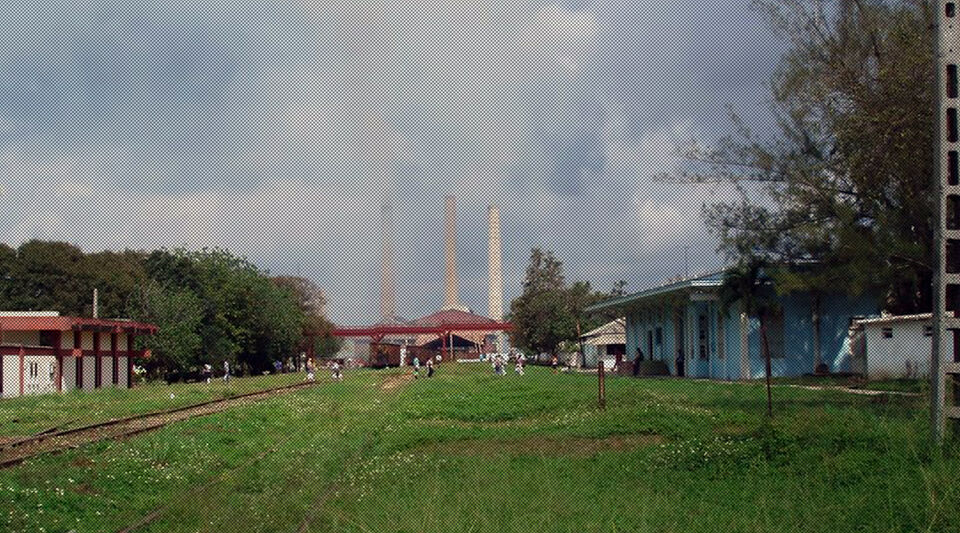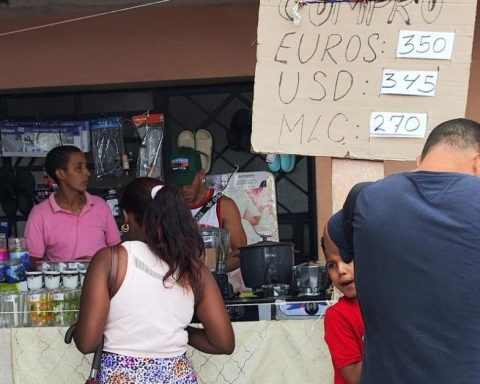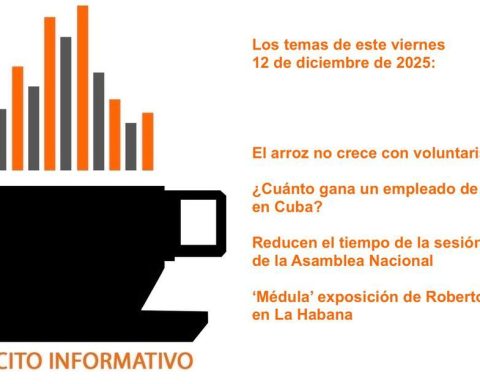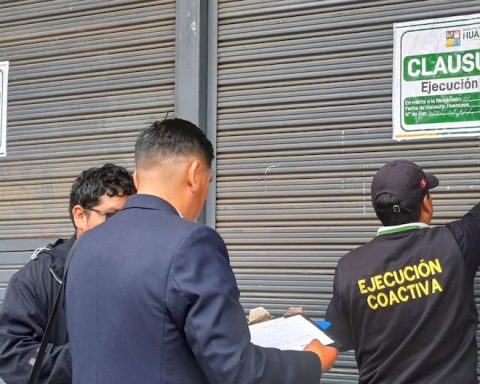The amount of sugar that Azcuba should have produced by this time is unknown, but the deficit is already 95,000 tons, a huge amount if one takes into account that 400,000 is the total needed just to satisfy domestic demand for the product. The engineer of the state sugar company Ángel Luis Ríos Riquenes told Granma with optimism that they consider being able to guarantee the forecasts, but the way of expressing it does not offer much confidence.
“It is true that it will take us a little longer than expected. With the production deficit that we have up to now, some plants have the end of the harvest in April. Others, in the month of May; and here is the greatest risk, that we may be affected by weather conditions,” said In an interview published this Sunday in the newspaper of the Communist Party.
The authorities made the decision last September, after a ruinous harvest, to grind in fewer mills to work more efficiently. Compared to the 36 that did so in 2022, of which only 3 fulfilled the planned plan, the president of Azcuba, Julio Andrés García Pérez, said that for this season it was necessary to “plan the harvest so that it is objective, flexible and, although small, with good practices, concentrating resources in fewer power plants”.
In 2022, 911,000 tons had been projected and barely 473,720 were obtained, so 455,198 tons of sugar have been programmed for this year
In 2022, 911,000 tons had been projected and barely 473,720 were obtained, so for this year 455,198 tons of sugar have been programmed, which will go to the family basket, tourism, medicines, industrial productions and exports, although last year 411,000 were promised in foreign sales and could not be sent.
The words this Sunday by Ríos Riquenes warn of the real possibility that the projected tiny harvest will not even be reached and among its causes the expert cites a new one: the personnel deficit due to “the aging of the labor force and the effect of the migration. Likewise, the current economic situation of the country, marked by inflation, influences. For example, the productive problems of a power plant prevent workers from receiving decent wages and many leave,” he points out.
To make matters worse, there are fewer and fewer bosses and qualified personnel “which has caused a lack of discipline and rigor,” reproaches the engineer, who reveals that the Antonio Guiteras plant (Las Tunas) has suffered several major breaks due to bad operations and for nine days was stopped. This is, along with Urbano Noris (Holguín), the one with the most problems. Both are the ones that currently contribute the most to the plan and their “non-compliances” weigh heavily in the total, says Ríos Riquenes.
Power failures, fires, a lack of parts for both sugarcane cutting and transport, fuel shortages and financing problems, attributed as usual to the US embargo, do the rest.
Ríos says that the problem, for the moment, has not been the cane in particular, although it could be exploited more, but the milling is the one that is not working satisfactorily and points out five other main culprits. November 30 (Artemisa), Mario Muñoz (Matanzas), Panama (Camagüey), Dos Ríos (Santiago de Cuba) and Arquímides Colina (Granma).
“To counteract this situation, measures were adopted with the cadres and to reinforce the attention to these mills. Today most of them have been taking the step, as confirmed by the increase in milling and yields,” he congratulates, although he adds one more cause to justify the low production: crime.
“The criminals have violated fences and warehouses, they have threatened the custodians and workers of the power plants, as well as the families of those who oppose them. Their damage has been quite representative in some power plants – those of Matanzas, Camagüey and Holguín, in concrete– (…) We made a tour of all [los de la Isla] and it became clear that the confrontation will be rigorous,” he adds.
Azcuba maintains its strategy, continues the engineer, to “make the harvest more flexible” and that part of the industries that are not dedicated to grinding make syrup for alcohols and spirits, an experience that, according to him, provides employment, produces income and contributes to the –battered– economy. In addition, some mills have been authorized to pay the debts they have with cane producers with the income obtained from alcohol production. This also offers an outlet for cane producers, who, given the order not to grind for more than a dozen mills, can sell the cane for alcohol even if it is not for sugar.
The data provided on Cuba in the interview is added to the more detailed ones on the 15th in the newspaper Sierra Maestra on the province of Santiago de Cuba, where more than 3,000 tons of a plan of 19,000 are owed.
The data provided on Cuba in the interview is added to the more detailed data published on the 15th in the newspaper Sierra Maestra on the province of Santiago de Cuba, where more than 3,000 tons of a 19,000 plan are owed “that can no longer be fulfilled in March due to the days of delay,” according to William Hernández Morales, coordinator of the Provincial Government sector.
The sugar scene in Santiago speaks for itself: of the four mills that still remain in the province, América Libre has the harvest area in operation and the mill has been stopped for three years. Julio A. Mella is dedicated to syrup, alcohol and animal feed; the Paquito Rosales with syrup –although it is adding some sugar outside the plan–; and only Dos Ríos contributes to the harvest for the basic basket.
In 1959, Cuba had 156 operating factories that produced 5.6 million tons of sugar. During the years of the Soviet subsidy, although without reaching the mythical 10 million announced by Fidel Castro, record figures were reached that exceeded eight million tons in the best vintages, between 1970 and 1989. Since then, the decline has been constant but in recent years it has plummeted and in the streets, Cubans miss one of the products they have resorted to the most to fill their stomachs due to the lack of food and despite the fact that its damages are increasingly known in the health.
“The other day I went to ask them to make me a cake for Valentine’s Day and they told me they had almost no sugar,” a man from Havana, shocked at the budget he was offered, told this newspaper: “2,000 pesos a cake without sugar!”
________________________
Collaborate with our work:
The team of 14ymedio He is committed to doing serious journalism that reflects the reality of deep Cuba. Thank you for accompanying us on this long road. We invite you to continue supporting us, but this time becoming a member of our newspaper. Together we can continue transforming journalism in Cuba.


















